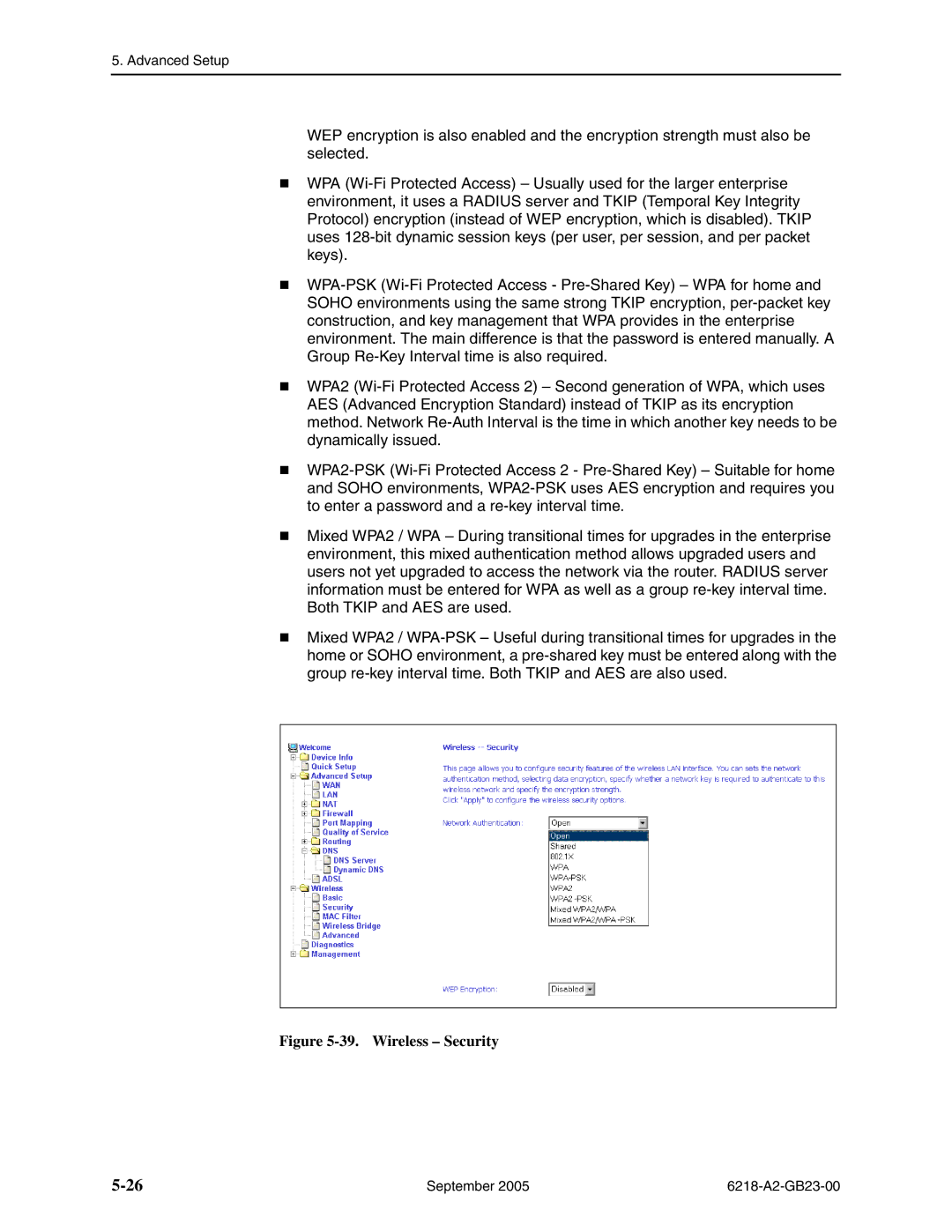WEP encryption is also enabled and the encryption strength must also be selected.
WPA (Wi-Fi Protected Access) – Usually used for the larger enterprise environment, it uses a RADIUS server and TKIP (Temporal Key Integrity Protocol) encryption (instead of WEP encryption, which is disabled). TKIP uses 128-bit dynamic session keys (per user, per session, and per packet keys).
WPA-PSK (Wi-Fi Protected Access - Pre-Shared Key) – WPA for home and SOHO environments using the same strong TKIP encryption, per-packet key construction, and key management that WPA provides in the enterprise environment. The main difference is that the password is entered manually. A Group Re-Key Interval time is also required.
WPA2 (Wi-Fi Protected Access 2) – Second generation of WPA, which uses AES (Advanced Encryption Standard) instead of TKIP as its encryption method. Network Re-Auth Interval is the time in which another key needs to be dynamically issued.
WPA2-PSK (Wi-Fi Protected Access 2 - Pre-Shared Key) – Suitable for home and SOHO environments, WPA2-PSK uses AES encryption and requires you to enter a password and a re-key interval time.
Mixed WPA2 / WPA – During transitional times for upgrades in the enterprise environment, this mixed authentication method allows upgraded users and users not yet upgraded to access the network via the router. RADIUS server information must be entered for WPA as well as a group re-key interval time. Both TKIP and AES are used.
Mixed WPA2 / WPA-PSK – Useful during transitional times for upgrades in the home or SOHO environment, a pre-shared key must be entered along with the group re-key interval time. Both TKIP and AES are also used.
Figure 5-39. Wireless – Security

